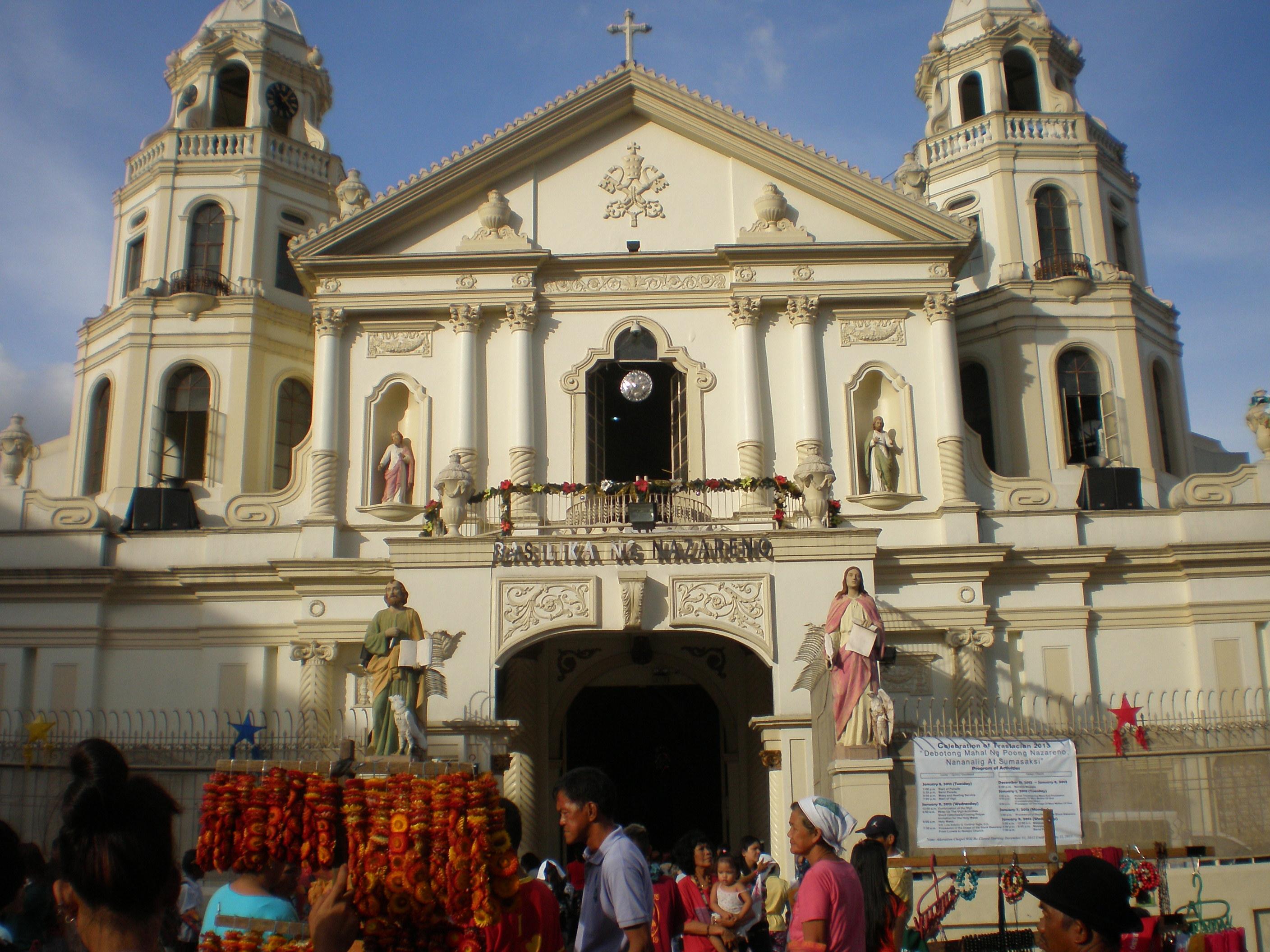
A short visit to Quiapo Church before the day of the Traslacion - the procession of the Black Nazarene.
The feast of the Black Nazarene is one of the most awaited celebrations in the Philippines. The feast is part of the religious culture of Filipinos. It only goes on to prove that most Filipinos are devout and very faithful. The Black Nazarene is also called “Nuestro Padre Jesús Nazareno” in Spanish and "Poong Itim na Nazareno" in Tagalog. The sculpture of the Black Nazarene is said to be miraculous and many Filipino Catholics believe in it. Many people say they have witnessed or experienced miracles by the Black Nazarene, especially healing and blessings. A lot of stories about miracles of the statue have been shared and recorded.
The procession of the life-sized, dark, wooden statue of Christ Jesus is the main highlight of the feast. The number of attendees number about 6 to 8 million, which is why the national and local government help to assist and organize different programs like medical stations in case of emergencies. They also sent security personell and policemen to keep the peace and order during the celebration. Before, the procession started at Quaipo Church then went around the streets of Manila, but due to vehicular and stampede accidents, the route and venue were altered. Today, the procession starts at the Quirino Grandstand. The image of the Black Nazarene has been taken to Quirino Grandstand before the day of the procession where some activities are held such as healing masses and “pahalik,” an activity where all devotees are given a chance to get closer and touch the statue of the Black Nazarene.
All devotees wear T-shirts that are either maroon or yellow with a print of the image of the Black Nazarene. Some of them brought their own sculptures, figures, statues, even pictures of the Nazareno during the procession. Some of them join the procession barefoot throughout the whole event as a sign of penance.
Some devotees choose to stay inside the church to wait the return of the statue and greet the Black Nazarene.
January 08, 2013, Tuesday, we went to Quiapo Church to check out and observe the preparations involved before the day of the actual procession. We didn’t encounter heavy traffic because we chose to ride on the LRT (Light Rail Transit) instead of taking a bus.
Souvenir Items
• T-shirt (Yellow and Maroon) – 100 Pesos
• Handkerchief and Face towel – 25 pesos
• A necklace made up of everlasting flowers – 20 Pesos
• Statue of the Black Nazarene (Price depends on its size)
After the interviews we decided to go inside the church. During our visit, a mass was about to start and all seats were occupied. We stood on the right side of the church with many other people. The church had a vast area that can accommodate hundreds of people but it would seem that that space was never really enough for the many devotees still coming in. The area was so beautiful and calm, one could feel the serenity of the church.
During our visit, the original statue of the Black Nazarene was not there because it was already at the Quirino Grandstand for the preparation of the procession. The songs played during the mass were so beautiful, one can feel their heart melt because of the music.
We also spotted some devotees who had disabilities. They are marvelous as their conditions did not prove to be hindrances to their faith in the Lord.
The Mass ended with benediction for all devotees.
I heard a lot of stories of miracles from different people who are also devotees of the Black Nazarene. I’m so happy because I personally witnessed the strong devotion of the people.

Devotees while entering the main entrance of Quiapo Church to attend the Holy Mass in the afternoon.

A banner hanging at Plaza Miranda

The busy people of Plaza Miranda and vendors hawking their wares.

T-shirts printed with the image of the Nazareno

Quiapo Church Marker

Schedule of activities for the 2013 celebration.

The church interior

A closeup of the church altar

Manong Cesar, devotee of the Black Nazarene, says he lives at Home for the Disabled. A vendor for almost 6 years, he said that the Black Nazarene is the reason why his body pains are gone. He also said that every time he missed the mass at Quiapo Church, he experiences pain.

Jane, writer, and Manong Cesar, one of the vendors as well as a devotee, while having an interview with him.

Mr. Abner Mercado is a premier Philippine journalist. He has been a reporter, director and producer of ABS-CBN News and Current Affairs since 1999 . We don't let the day finish without a picture of him.

Mr. Abner Mercado while interviewing one of the church officials around 4 o'clock.










